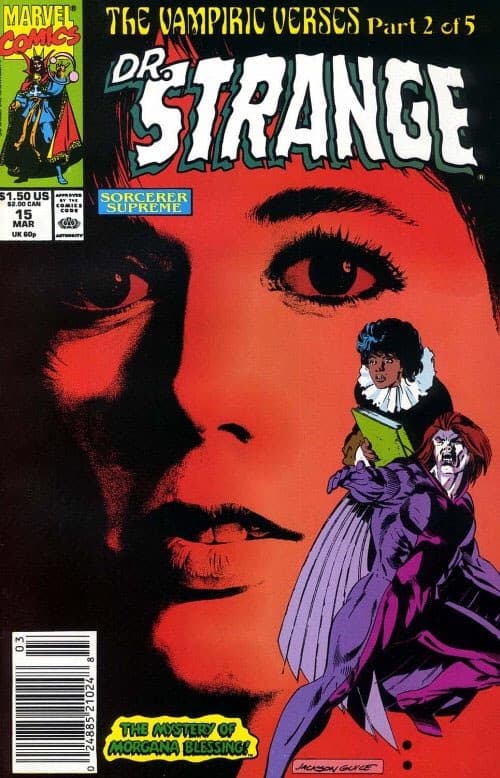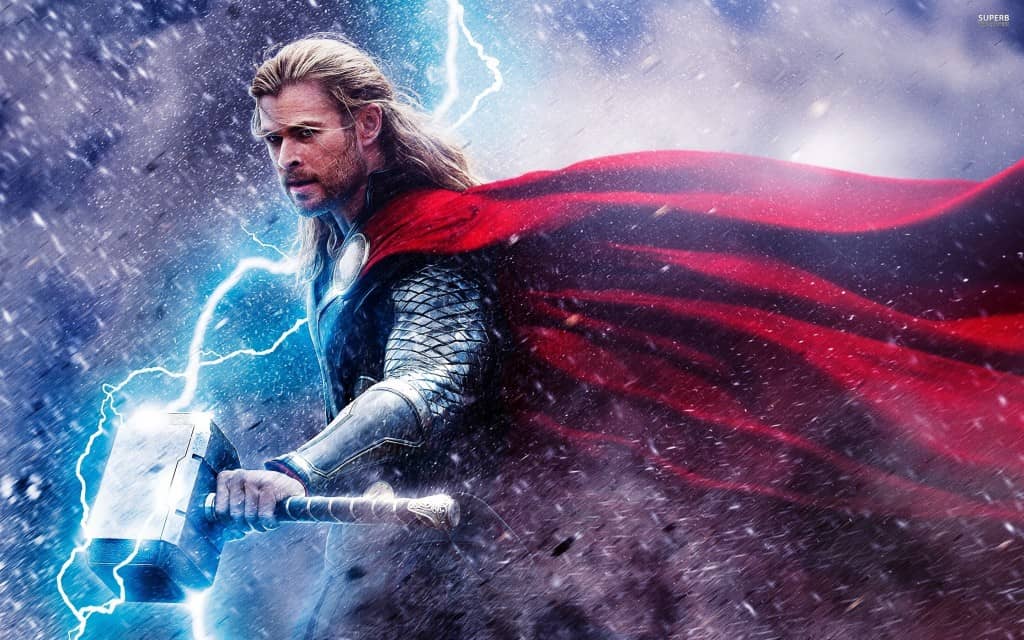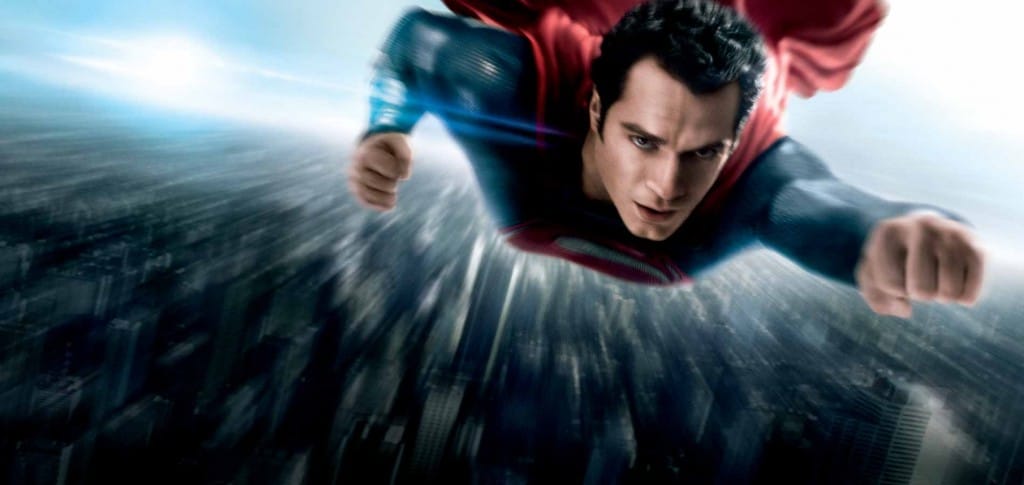“Comics are the new Bible,” film critic Anne Billson recently declared, “and devotees never tire of seeing their idols save the world.” Her elevation of comic books to canonical status in the culture is overstated, but I think she may be close to the truth in suggesting that part of the current appeal of comics is their openness to the supernatural.
 In an increasingly secularized culture, comic books splash unabashed glimpses of supernatural sacrifice and world-saving wonder across silver screens and wood-pulp panels. Superman and Thor descend from the heavens with divine powers, while heroes such as Captain America and Iron Man gain their superhuman strengths through advances in science and technology that stand far beyond humanity’s current capacities. In Endgame—the last installment of The Avengers—it is anticipated that there will be resurrections that reverse the deaths that took place in Infinity War. What’s more, the lives of these superheroes are threaded within a multiplicity of multi-layered metanarratives that weave together conflicts from dozens of storylines and that typically turn out to be as vast as the cosmos itself.
In an increasingly secularized culture, comic books splash unabashed glimpses of supernatural sacrifice and world-saving wonder across silver screens and wood-pulp panels. Superman and Thor descend from the heavens with divine powers, while heroes such as Captain America and Iron Man gain their superhuman strengths through advances in science and technology that stand far beyond humanity’s current capacities. In Endgame—the last installment of The Avengers—it is anticipated that there will be resurrections that reverse the deaths that took place in Infinity War. What’s more, the lives of these superheroes are threaded within a multiplicity of multi-layered metanarratives that weave together conflicts from dozens of storylines and that typically turn out to be as vast as the cosmos itself.
Throughout the past century, comic books and their cinematic counterparts have produced a stream of supernatural metanarratives with heroes that are continually called upon to save the world—and, right now, people are buying these tales by the millions. Last year, an estimated 98 million comic books were purchased in North America alone. Despite being weighted with the freight of less-than-stellar reviews, Batman v. Superman: Dawn of Justice still enjoyed the fourth-largest worldwide cinematic opening of all time at the time of this release, and the Marvel Cinematic Universe films have produced more than ten billion dollars of revenue so far with no signs of slowing down.

Remnants and Residue of a More Coherent Worldview
But how should Christians engage with comic books and superhero films?
For many Christians, the temptation seems to be to engage in what I would identify as a “thin reading” of these cultural artifacts, hunting for surface-level connections between the Bible and our favorite superhero tales. Pastors who become caught up in such thin readings may construct entire sermon series out of the latest films or feel compelled to drop references to movies into their messages—all to achieve a perceived sense of relevance by linking Scripture to culture. This is not authentic cultural engagement, however. In most instances, it’s closer to uncritical cultural appropriation. Full-fledged Christian engagement with the culture digs deeper than surface-level links and wrestles with the conflicting worldviews that undergird these artistic artifacts.
In Art and the Bible, Francis Schaeffer distinguished between four types of artists, and his typology is helpful for guiding our engagement with comic books and superhero films. The first type of artist that Schaeffer described was the Christian who creates art from a Christian worldview; the second was a non-Christian who creates from a non-Christian worldview; and, the third was a non-Christian who creates from the remnants and residue of a Christian worldview. Schaeffer’s fourth type was the Christian who does not grasp the comprehensive coherence of the Christian worldview and, as a result, creates art within a conflicted and contradictory worldview.
When it comes to engaging with comic books and superhero films, most of what we see comes from Schaeffer’s third type of artist, the non-Christian whose creations are populated with the remnants and residue of a biblical worldview. This may be, at least in part, because the creators of Superman and many other early superheroes had Jewish roots, and Old Testament themes ended up woven into comic books from the earliest stages of their evolution. Whatever the reason, nearly every comic-book hero is part of an overarching metanarrative that requires supernatural sacrifice to save the world.
Whatever works in these superpowered metanarratives works precisely because the artist has borrowed remnants from the comprehensive coherence of a biblical worldview. The unbeliever sees these world-saving wonders and may experience a passing sense of awe or appreciation. And yet, any goodness or truth that the unbeliever glimpses becomes, in the words of John Calvin, like “a flash of lightning that enables a bewildered traveler to see far and wide for an instant, but then the light vanishes … before the traveler can take a single step in the right direction” (Institutio Christianae religionis, 2:2:18).

Splintered Fragments of a More Marvelous Metanarrative
The believer, however, is able to draw out the remnants and residue of the Christian worldview beneath the surface of these stories. Humanity’s best stories are, after all, always borrowed from God’s greater story. “Every artist is a cannibal, and every poet is a thief,” Bono sang on U2’s Achtung Baby album, and he spoke more truth than he knew. Humanity’s finest artistic moments always turn out to be reworkings of God’s greater metanarrative. They are signposts that have been borrowed and reshaped from our Creator’s storyline to elicit within us a longing for a narrative that’s greater than ourselves. This is no less true of comic books than it is of other expressions of narrative or art.”We have come from God,” J.R.R. Tolkien once pointed out, “so inevitably the myths woven by us, though they contain error, reflect a splintered fragment of the true light, the eternal truth that is with God.”
If we fail to see that these myths are meant to point us to something greater, they will always—in the words of C.S. Lewis—“betray us. … For they are not the thing itself; they are the scent of a flower we have not found, the echo of a tune we have never heard.” The narratives we see in the best of comic books and superhero films are passing hints that ought to point the believer’s attention to God’s greater metanarrative.

A Framework for Engaging with Competing Worldviews
So what are some practical ways that we learn to glimpse the remnants and residue of a biblical worldview in the best of human myths? Here’s a simple framework—based on the four-act metanarraitve of creation, fall, redemption, and new creation—that I’ve used to help my older children to engage with the worldviews presented in superhero, science fiction, and fantasy books and films:
- God created the world beautiful and good, and he calls us to appreciate beauty and goodness. What did you see in this story that reflected God’s good and beautiful design? God did not merely create a universe that works; he created a universe that’s beautiful, and he created human beings with the capacity to appreciate and to create beauty. Where did you glimpse that beauty in this book or film? Does it present us with the dream of a glorious past that’s been lost? If so, what did that past look like?
- The world has been corrupted by sin, and this corruption extends to the works of art that we create. What in this book or film was inappropriate and unworthy of imitation? What were the writers or creators trying to tell us that is false or only partly true? What is broken in the plot of this story that the heroes are trying to redeem or to repair?
- The world needs redemption, and the best art both refuses to downplay the awful brokenness of our world and includes redemptive themes that echo God’s plan to redeem this world. What does this book or film present as the answer to the brokenness that drives the plot? How do the heroes redeem or repair the brokenness? How was this redemption accomplished and applied? What does this tell us about the writers’ worldview? Were the writers or creators consistent in following their worldview, or are there conflicts within their own worldview?
- God has promised to make the world new, and every human heart longs for a world where everything is set right. What is the vision of this book or film for the way life ought to be? What is the hero’s hope for the future? What does this story leave you longing for? What desires for the future did this story awaken within you?
And so, are “comics … the new Bible”?
Not even close—but comic books and superhero films do provide opportunities to glimpse the coherence of a biblical worldview as we examine the ways that these cultural artifacts rework the remnants and residue of God’s far more marvelous truth.
An earlier version of this article originally appeared in Towers magazine.
Discuss in the Comments:
Carefully consider Francis Schaeffer’s four types of artists. List examples of artists, musicians, and film-makers that might fit into each of Schaeffer’s categories. Explain why you think that the work of this artist, musician, or movie maker belongs in this category.

